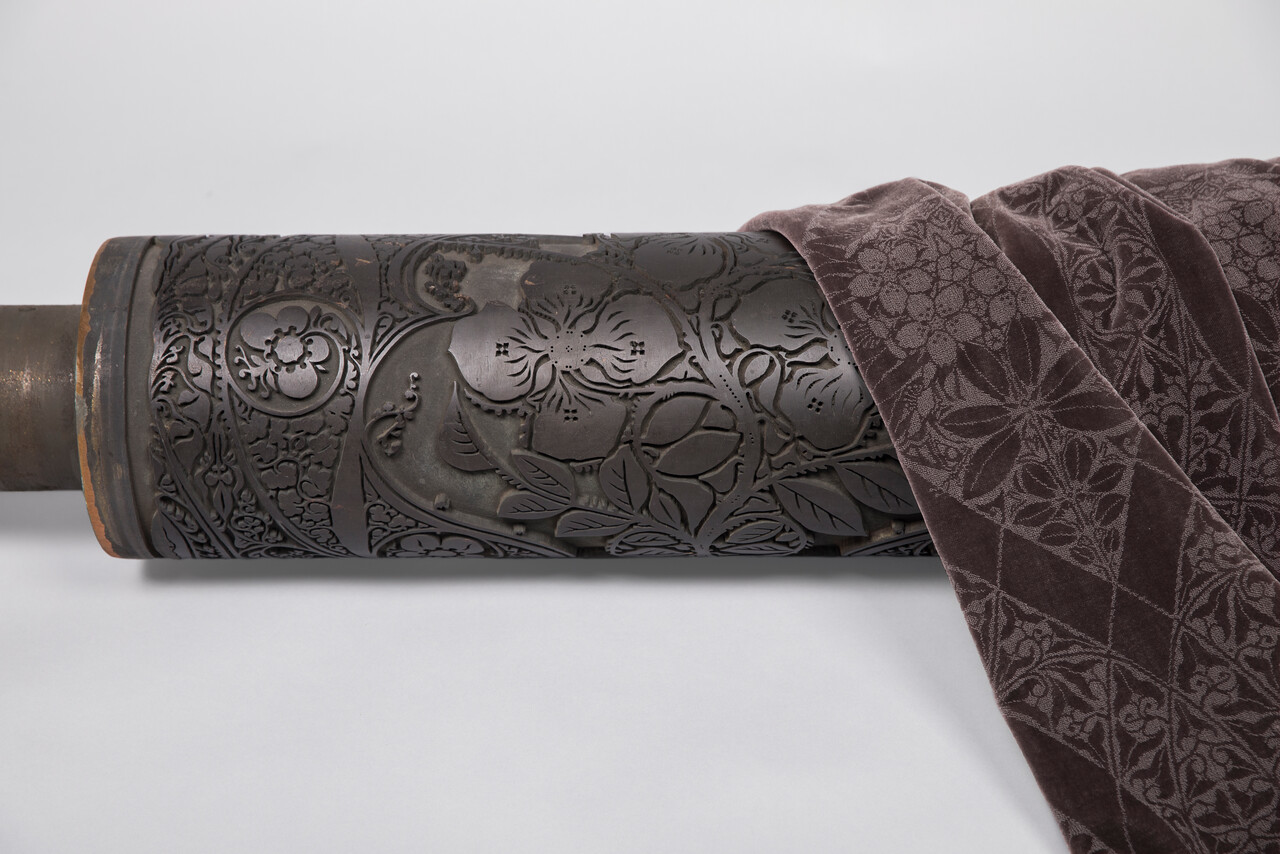Visitors to the TextielMuseum see only a fraction of the enormous collection. The museum’s storage depots contain more than 18,000 works. Delving into this treasure trove can be invaluable for makers, says head of collections and curator Sjouk Hoitsma.
Whether you are an experienced textile designer or not, the museum collection is an invaluable source of information and inspiration for anyone interested in working in the lab. For example, the carefully preserved mid-century books of weaves from the Tilburg Textile School are still used as a reference for the lab’s high-tech looms. Meanwhile, the 19th-century dye recipe books are an integral part of the exhibition To dye for. Nan Groot Antink’s ‘From aster to sorrel’, a work featured in the exhibition, demonstrates how knowledge from the historical collection is being reapplied in contemporary dyeing processes. The old recipes resulted in the creation of a dye plant garden that supplies the ingredients for this growing work of art, which can be seen in the museum until 13 November.
Start online
Every maker with an interest in textile design should start by visiting the publicly accessible online collection, says head of collections and curator Sjouk Hoitsma. The search options in the sub-collections in the database help you navigate the enormous and varied collection of pieces. These range from a weaver’s lamp from the 14th century to a scale model of a ‘spinning mule’ from the late 19th century, and from knitting samples for an energy-generating curtain to interactive trimmings from the 21st century. You can search by technique, object, the maker’s name, material, place and date. While browsing, you may come across things you have never heard of. “Do you know what moquette is, for instance?” Hoitsma asks. “It’s a velvety woven pile fabric made of goat’s hair used in the most beautiful art deco rugs. It’s often things like this, which you stumble upon by accident, that unexpectedly affect you.”

“The 3,000 historical samples from De Ploeg weaving mill are a goldmine of inspiration.”
Delving deep
The online portal is a good place to start. If you would like to delve deeper, you can make an appointment to explore the more comprehensive museum database in the library or view the actual works in one of the depots. If you are scheduled to work in the lab, the depots are also a great place to prepare as they allow you to pick up and touch samples not available in the Sample Studio. Hoitsma names a few she finds particularly inspiring: “The designers behind Formafantasma, the ambassadors for Dutch Design Week, recently went through the more than 3,000 historical samples we have from De Ploeg weaving mill. They are a goldmine of inspiration.” Artist duo JAS&CAL also found inspiration in a sample book from De Ploeg. Using old lace structures for net curtains as a starting point, they developed a contemporary alternative using gossamer metal yarn, which is on display in the exhibition Secrets of making #2. The collection of household textiles is also a useful starting point for many, says Hoitsma. “Kitty van der Mijll Dekker’s tea towels from the 1930s immediately come to mind. They are much more than tea towels; they are works of art, made entirely according to the Bauhaus principle that technique determines the design. By literally interweaving the coloured warp and weft, she created a pattern of coloured progressive lines. This is the essence of weaving, and it’s a must-see if you come to work on the looms here. We remade the design in the lab, and it’s still sold in the museum shop. The collection contains more than 300 of her designs, most of them for home textiles. They’re an endless source of inspiration.”
Kitty van der Mijll Dekker, ‘Glass polishing cloth progressive borders in red and blue’, made in the E..J.F. van Dissel & Sons Linen Factory (Eindhoven, 1935), and the remake sold in the museum shop. Photos: Joep Vogels en Josefina Eikenaar.
From sketch to artwork
Part of what makes the collection so special is that it not only contains finished products but also preliminary sketches and tests. In this working museum, you can see how an item is created, which enables one maker to inspire the next. Hoitsma gives Bart Hess as an example. He braided objects on the historic braiding machine in the lab’s passementerie department. His work ‘STIMULUS; cord reflexes, Subject R.F.’ subsequently inspired designer Tijs Gilde to develop a braid with a wooden core. Working with product developer Veva van der Wolf, Gilde’s aim was to braid a decorative covering for the wood while creating a load-bearing connection between the wooden elements that do not require screws or glue. Tanja Smeets also experimented with incorporating three-dimensional shapes into braids while conducting research into the ‘skin’ of her works in the passementerie department. The results were included in her installation ‘Under the pavement the roots swirl’, exhibited in Kunsthal Kade in Amersfoort in early 2022.
Contexts and connections
If you are looking for something specific in the thousands of works stored in the depots, send an email to collection@textielmuseum.nl. Our curators, collection managers and librarian will then point you towards relevant projects. On request, and if feasible, works can be moved from the depot to the library for you to view. “A lot of knowledge and information is in our heads. You can’t put all those contexts and connections in a database,” says Hoitsma. “If you’d like to dig deeper, please get in touch – there’s so much more available than what you see online. Textiles are a medium for storytelling. We can help you gather input for that story.”